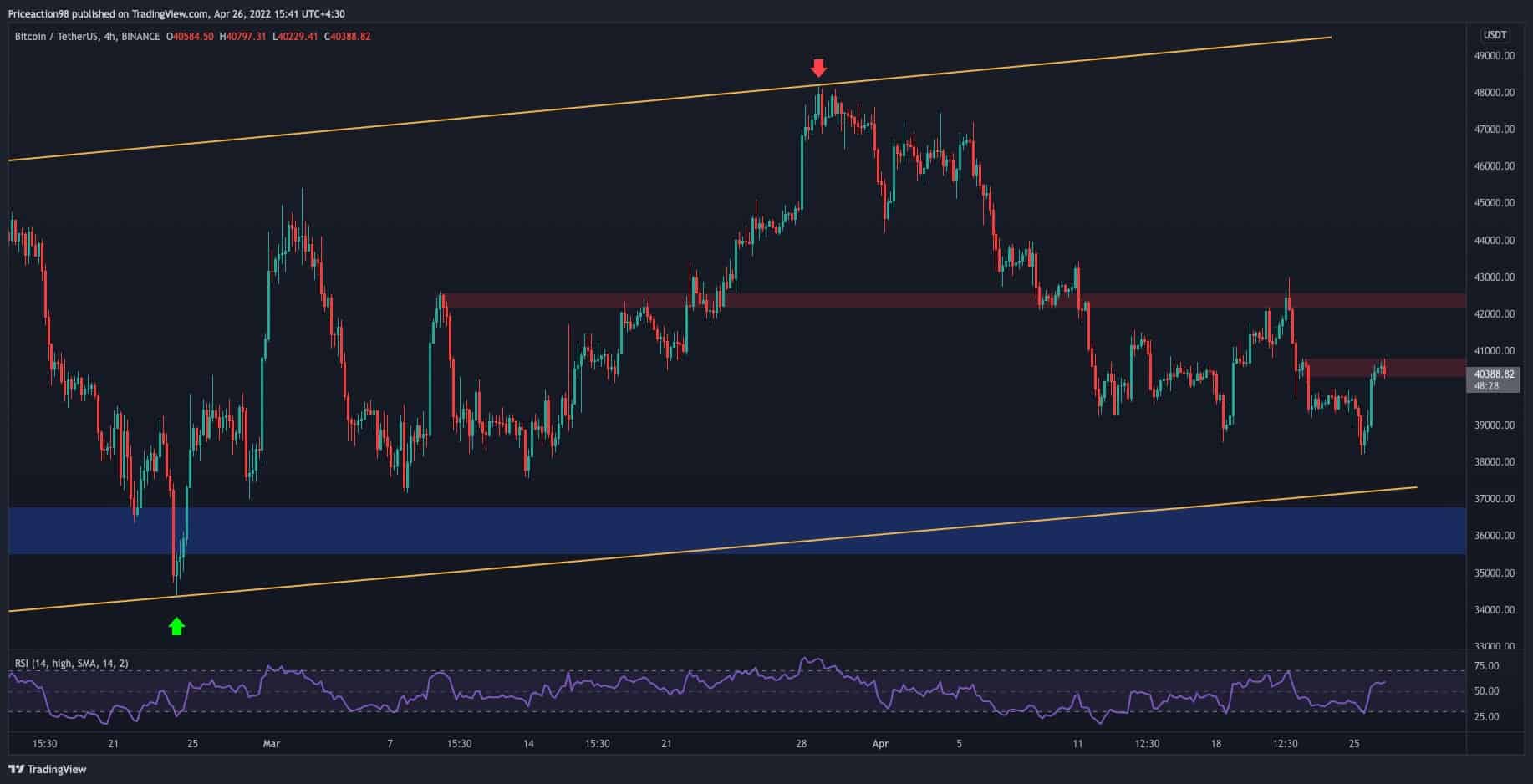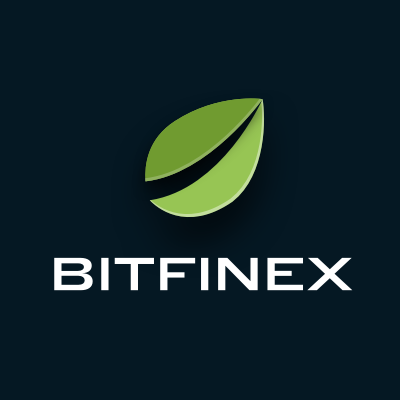Go+ Security Engine: Solving Everpresent Security Issues in the Crypto Industry
The cryptocurrency has grown tremendously in the past couple of years in terms of valuations but also in terms of adoption.
From institutions jumping on the Bitcoin bandwagon to retail investors flooding memecoin markets and non-fungible tokens (NFTs) exploding in popularity, the examples are countless.
However, if there’s one constant threat that’s lurking within the industry, that would surely be security. Despite crypto becoming a multi-trillion dollar field, we hear of hacks and thefts on a daily basis. According to blockchain analytics firm Chainanalysis, $14 billion went to scammers in 2021. This is due to various reasons, but it’s also the inherent cost of early-stage decentralization in an industry where users take custody of the assets they hold.
With the emergence of Web3 as a growing concept, it becomes apparent that the security system currently in place is rather fragile. The supply of security resources tends to be insufficient and monopolized, where audit schedules are often upwards of months. Moreover, the audit results also do not guarantee threat prevention outside of the code level because a lot of the security incidents are direct consequences of phishing campaigns, fake wallet communities and addresses, contract authorization scams, and so forth.
Keeping the above in mind, it’s easy to understand why it’s hard for users, especially inexperienced ones, to secure themselves from malicious agents in the Web3 space. There’s a steep learning curve to it, though, and it takes time to adapt the system, and secure one’s self from potential dangers such as rug pulls, airdrop scams, phishing, and so forth. Moreover, there are new types of scams coming up every day, and it’s important to take the necessary precautions.
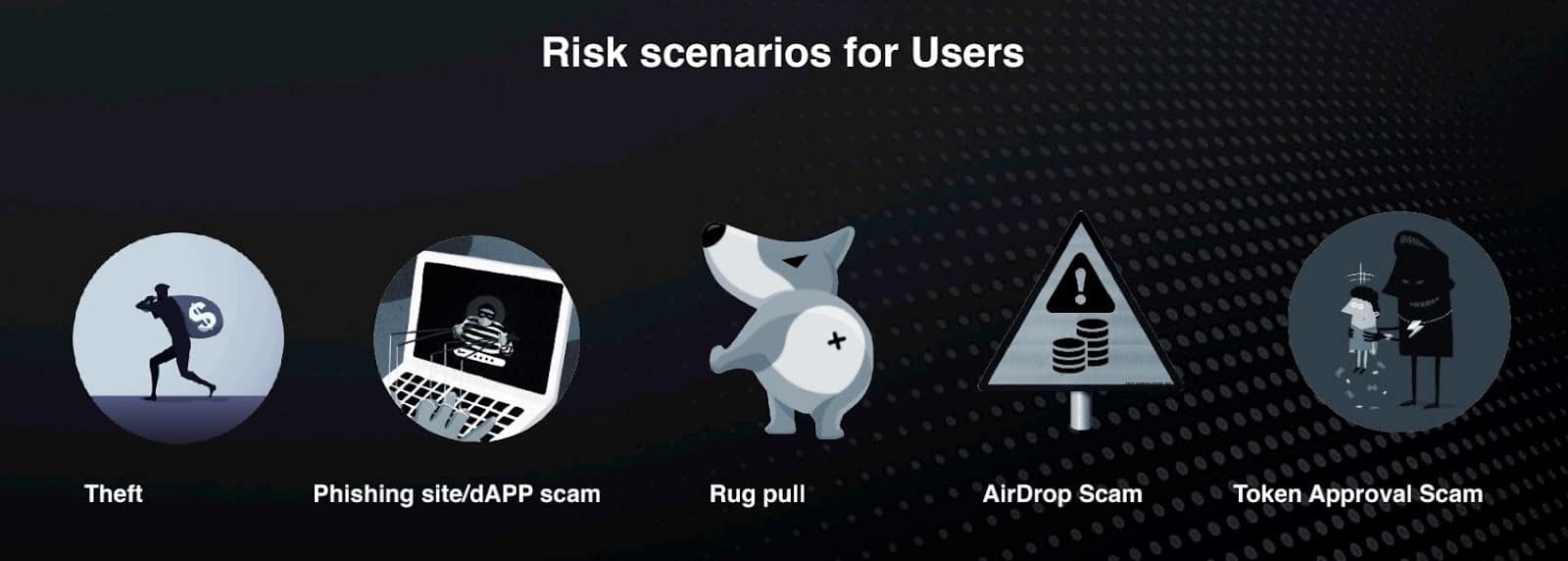
Take Elon Musk, for instance. His personality is constantly the target of copycat scammers, and he most recently addressed that, slamming Twitter for failing to take action and handle the problem. Musk impersonators run daily campaigns, scamming thousands of people out of their crypto.
One proposition for tackling some of the issues outlined above, and many others in the meanwhile, comes from Go Pocket. The team has built new infrastructure in the face of their Go+ Security Engine that’s designed to reshape the security value chain.
The Go+ Security Engine
Go+ Security Engine brings forward an entirely new infrastructure geared towards users in Web3. One of the problems that it aims to solve is the mismatch between supply and demand in security while also reshaping the security value chain.
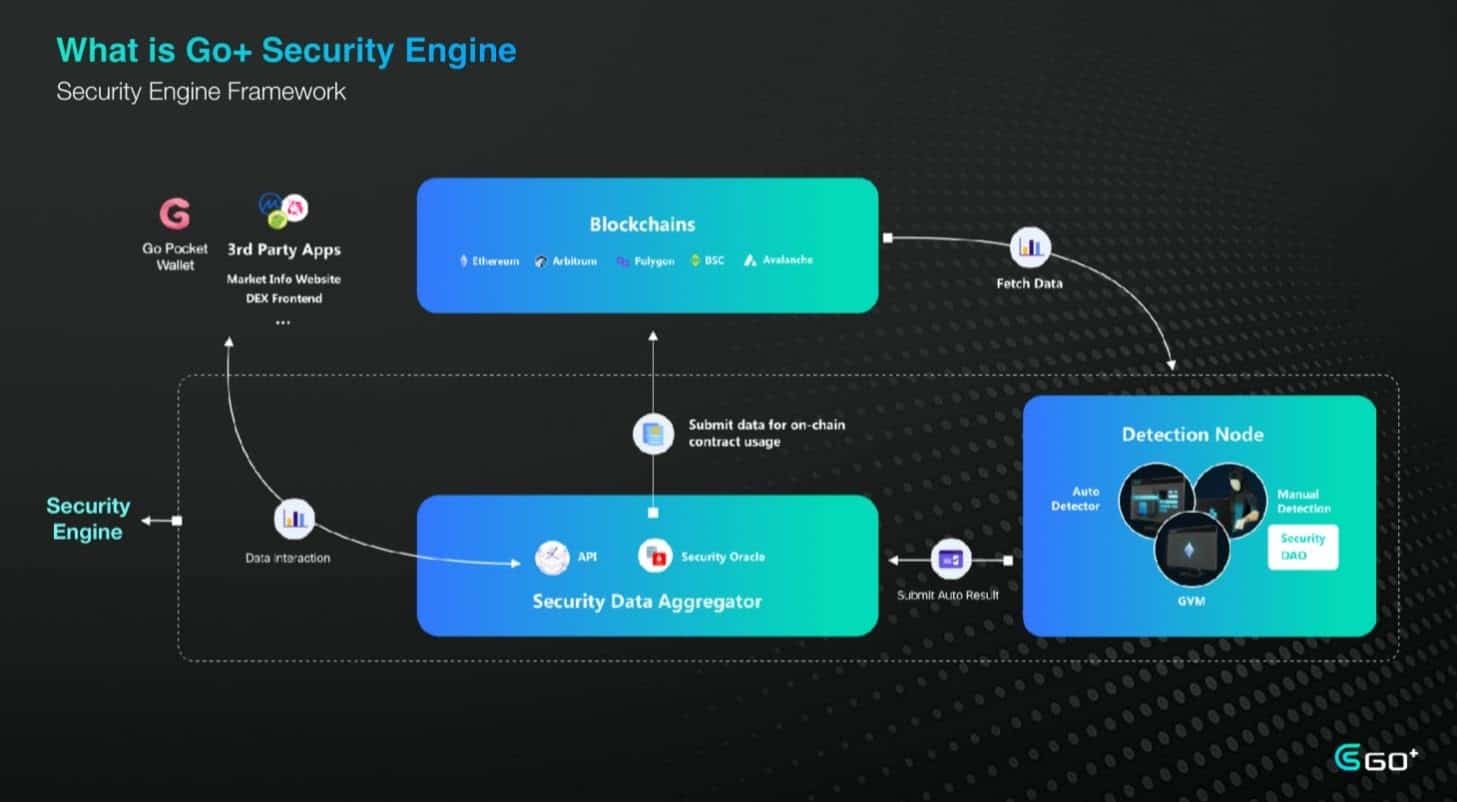
The way it does it is through a set of core strategies, including the open output of security capabilities and structuring a security-oriented decentralized autonomous organization (DAO).
The method in question includes a precise sequence of procedures that include:
- Building a complete security capability: This garners a database updated in real-time by many users and an automated dynamic security engine that’s used to monitor both real and simulated on-chain environments in all dimensions to achieve multi-category security risk coverage.
- Provide open APIs on demand: The team provides open API services for the actual scenarios that users face and need, based on complete security capabilities.
- Passive triggering into an active interception: The system notifies the entire network at the first moment of the user’s exposure to risk while changing the attacker’s profit model.
- Setting up a security DAO for co-construction and co-governance: This follows the principle that everyone can provide audit services for others, and everyone is a first-hand source of security information. Moreover, anyone who contributes to the security content will also be rewarded.
In addition to all of the above, the team has also developed its open-source cryptocurrency wallet called Go Pocket.
The Go Pocket Wallet
First things first, the Go Pocket wallet is available on both the App Store and the Google Play store for iOS and Android users.
Once you get the app downloaded and create a wallet, this is what the interface looks like:
 So far, it looks like a regular wallet with a rather simplistic and easy-to-navigate design. However, there’s a clear focus on security. Once the user taps on the security button, they are able to add new assets for security detection by simply importing their addresses. For the sake of this example, we imported the CVX token and checked its security status. That’s what the wallet revealed:
So far, it looks like a regular wallet with a rather simplistic and easy-to-navigate design. However, there’s a clear focus on security. Once the user taps on the security button, they are able to add new assets for security detection by simply importing their addresses. For the sake of this example, we imported the CVX token and checked its security status. That’s what the wallet revealed:
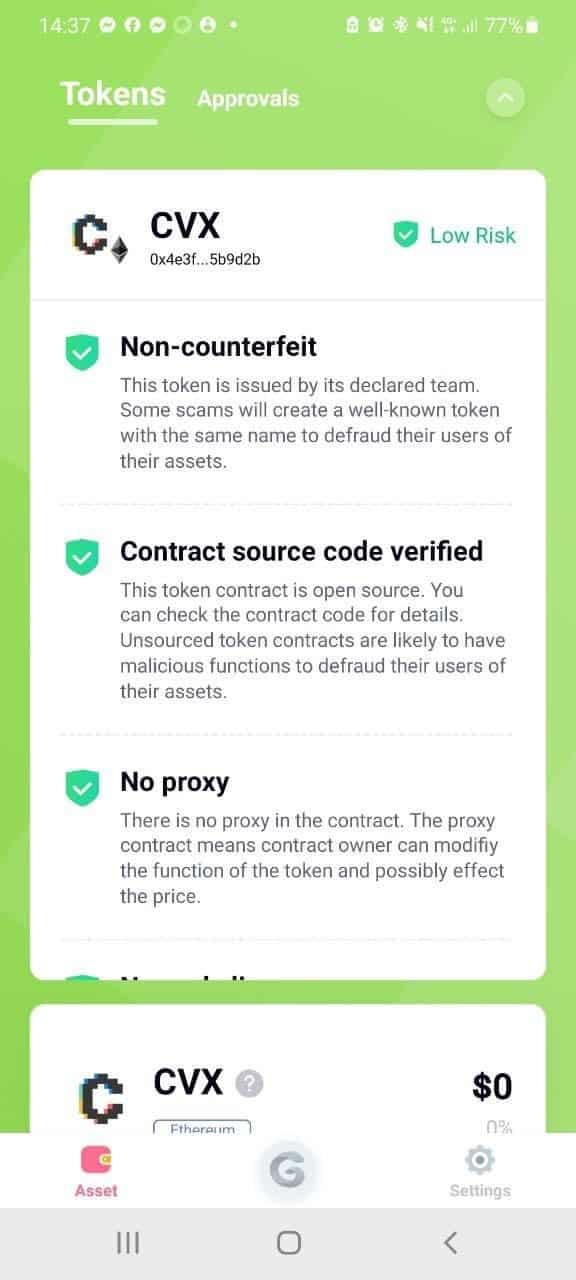
Having all this information readily available at your fingertips is particularly convenient and can come in handy in more than one situation.
Being able to seamlessly verify the security status of a token and whether or not there are some issues associated with it in a quick and objective way is a step forward in the right direction. It not only improves the overall crypto journey of the user but also makes it easier to formulate an investment thesis and assess risk profiles of different projects.
All in all, Go+ Security’s team is doing a fair job in improving the overall experience of users and protecting them from malicious actors. They also have quite a few things planned in the pipeline. For a proper timeline and roadmap, take a look at the official website.





